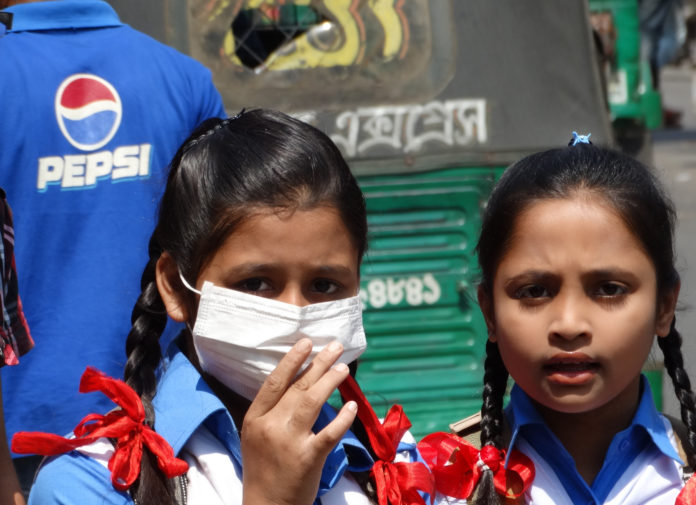
New WHO report on Air pollution and child health examines the heavy toll of both ambient (outside) and household air pollution
Every day around 93% of the world’s children under the age of 15 years (1.8 billion children) breathe air that is so polluted it puts their health and development at serious risk.
World Health Organisation estimates that in 2016, 600,000 children died from acute lower respiratory infections caused by polluted air.
A new WHO report on Air pollution and child health: Prescribing clean air examines the heavy toll of both ambient (outside) and household air pollution on the health of the world’s children.
The report was launched on the eve of WHO’s first ever Global Conference on Air Pollution and Health.
Air pollution is one of the leading threats to child health, accounting for almost 1 in 10 deaths in children under five years of age.
It reveals that when pregnant women are exposed to polluted air, they are more likely to give birth prematurely, and have small, low birth-weight children.
Air pollution also impacts neurodevelopment and cognitive ability and can trigger asthma, and childhood cancer. Children who have been exposed to high levels of air pollution may be at greater risk for chronic diseases such as cardiovascular disease later in life.
“Polluted air is poisoning millions of children and ruining their lives,” says Dr Tedros Adhanom Ghebreyesus, WHO Director-General. “This is inexcusable. Every child should be able to breathe clean air so they can grow and fulfil their full potential.”
One reason why children are particularly vulnerable to the effects of air pollution is that they breathe more rapidly than adults and so absorb more pollutants.
They also live closer to the ground, where some pollutants reach peak concentrations – at a time when their brains and bodies are still developing.
Newborns and young children are also more susceptible to household air pollution in homes that regularly use polluting fuels and technologies for cooking, heating and lighting
Key findings:
• Air pollution affects neurodevelopment, leading to lower cognitive test outcomes, negatively affecting mental and motor development.
• Air pollution is damaging children’s lung function, even at lower levels of exposures
• Globally, 93% of the world’s children under 15 years of age are exposed to ambient fine particulate matter (PM2.5) levels above WHO air quality guidelines, which include the 630 million of children under 5 years of age, and 1.8 billion of children under 15 years
• In low- and middle-income countries around the world, 98% of all children under 5 are exposed to PM2.5 levels above WHO air quality guidelines. In comparison, in high-income countries, 52% of children under 5 are exposed to levels above WHO air quality guidelines.
• More than 40% of the world’s population – which includes for 1 billion children under 15 – is exposed to high levels of household air pollution from mainly cooking with polluting technologies and fuels.
• About 600’000 deaths in children under 15 years of age were attributed to the joint effects of ambient and household air pollution in 2016.
• Together, household air pollution from cooking and ambient (outside) air pollution cause more than 50% of acute lower respiratory infections in children under 5 years of age in low- and middle-income countries.
• Air pollution is one of the leading threats to child health, accounting for almost 1 in 10 deaths in children under five years of age.













